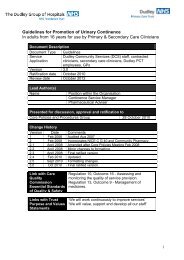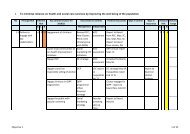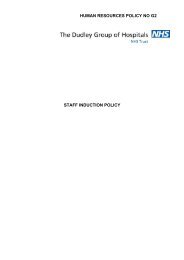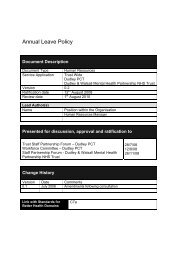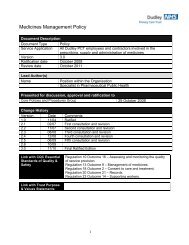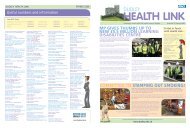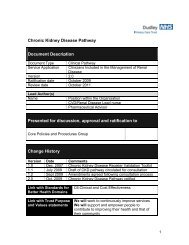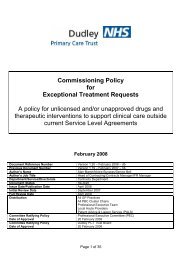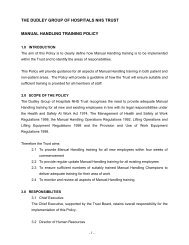Dudley Strategy for Tackling Health Inequalities 2010-15
Dudley Strategy for Tackling Health Inequalities 2010-15
Dudley Strategy for Tackling Health Inequalities 2010-15
- No tags were found...
Create successful ePaper yourself
Turn your PDF publications into a flip-book with our unique Google optimized e-Paper software.
7.3 TOBACCO CONTROLIntroductionTobacco control is collective action taken to reduce smoking prevalence; as researchshows that no single approach to tackling smoking will be successful in isolation. TheGovernment has implemented a comprehensive range of measures over the lastdecade based on the World <strong>Health</strong> Bank recommendations known as the „six strand‟approach. The six strands are:1. Reducing exposure to secondhand smoke (SHS)2. Communication and education3. Reducing the availability and supply of cheap tobacco4. Support <strong>for</strong> stop smoking services5. Reducing tobacco promotion6. Tobacco regulationThis approach has been shown to be highly effective in England with some of themeasures being largely self sustaining, <strong>for</strong> example the health warnings on tobaccopacks and smokefree public places. Key areas that require continued funding andintervention at local level are the provision of stop smoking services, tackling illicittobacco and communications and education campaigns (APPG, <strong>2010</strong>).Cigarette smoking is closely and pervasively linked to a wide range of markers ofsocioeconomic and personal disadvantage resulting in increased well known healthrisks. Smoking also directly exacerbates poverty, by taking up a substantialproportion of disposable income and pre-empting expenditure on basic necessitiessuch as food and clothing (RCP, 2000).Nationally, around 35% (22,000) of all deaths due to respiratory diseases and 29%(37,500) of all cancer deaths were attributable to smoking. In addition, 14% (20,600)of deaths due to circulatory diseases and 6% (1,300) of deaths due to diseases ofthe digestive system were attributable to smoking (ONS, <strong>2010</strong>). In <strong>Dudley</strong>, it isestimated that between 2006-8, there were 1,497 deaths that were attributableto smoking (<strong>Dudley</strong> PCT, 2009a).Smoking in pregnancy can increase infant mortality by approximately 40% (GreatBritain. Department of <strong>Health</strong>, 2009b). Babies born into poorer households aresignificantly more heavily exposed to passive smoking throughout infancy andchildhood, and non-smokers living in more deprived circumstances remain moreheavily exposed to other people‟s smoke throughout life. Being born into anenvironment where smoking is modelled as the norm inevitably leads to higher ratesof smoking uptake in adolescents from poor backgrounds (RCP, 2000), there<strong>for</strong>eperpetuating smoking and health inequalities.Smoking prevalence in pregnant women nationally was 14% in 2008 as measuredby women‟s self-reporting at the time of delivery (this is widely thought to be anunderestimate since there is evidence of significant underreporting. (Great Britain.Department of <strong>Health</strong>, 2009b) . The PSA (<strong>2010</strong>) target was to:92




